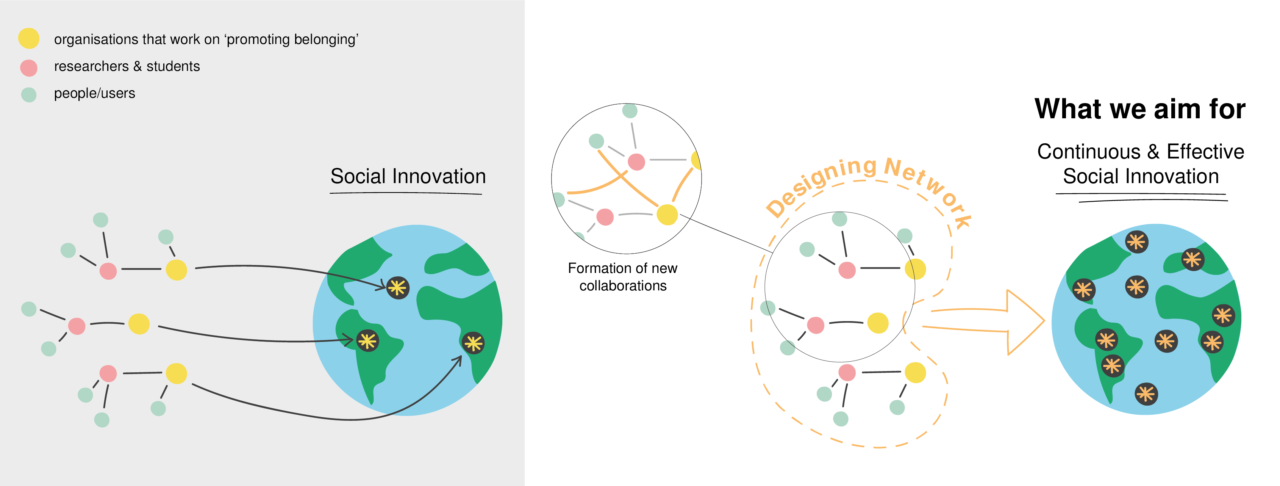The Belonging project
Jun 2020 - ongoing
It’s human nature to want to fit in. Indeed, at some point in our lives, most of us – whether classified as a shy introvert or the most outgoing of extroverts – experience that awkward feeling of not quite belonging. But what does it actually mean to belong? The Belonging Project aims to find the answer to this question and to understand and learn how we can design for belongingness and human connectedness. It focuses on young people – children, teenagers, students – as human connection and wellbeing are also intrinsically connected to learning and thereby have a great impact on their chance to flourish in life.

The Belonging Project takes place in the broader context of our research into design practices for social innovation. Over time, the design practice has moved from designing ‘things’ to one that focuses on social innovation, aiming to create value for society as a whole rather than the individual. Strengthening the human connectedness among young people is such a complex societal challenge. The current design practices and principles are and need to be adapted to be able to design for social innovation.

Examples of current practices are systemic design, human-centred design, iterative design, framing and collaborative design practices. Within the Belonging Project, we are also interested in the development and impact of these practices in relation to solving societal challenges. What can these practices bring to this type of challenges and how can we learn to improve their application?

The Belonging Project also wants to bring people and (public) organisations together whose work is related to the promotion of belonging among young people. Through in-depth design research, workshops, research experiments and graduation students research, the aim is to build relationships and ultimately to form a ‘Designing Network that Promotes Belonging’. If more and more organisations collaborate towards the same goal, social innovation initiatives will be more effective and continuous.
Find more information and the project’s blog on their website.